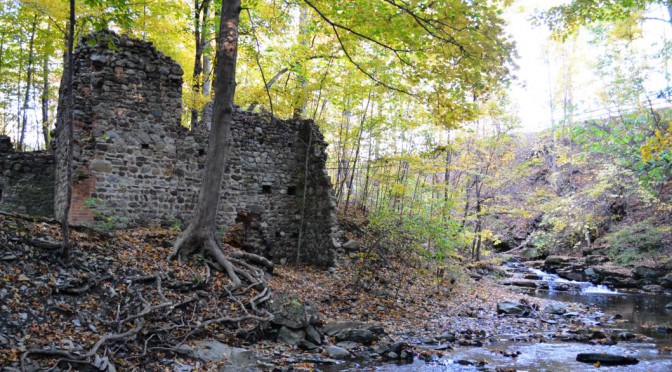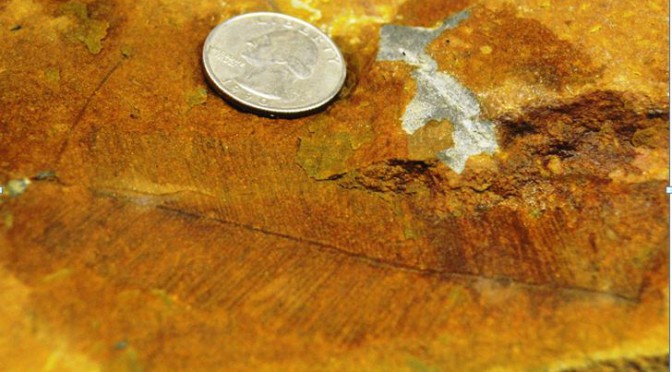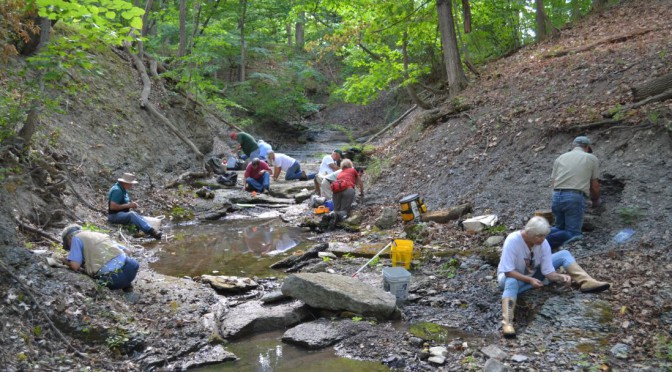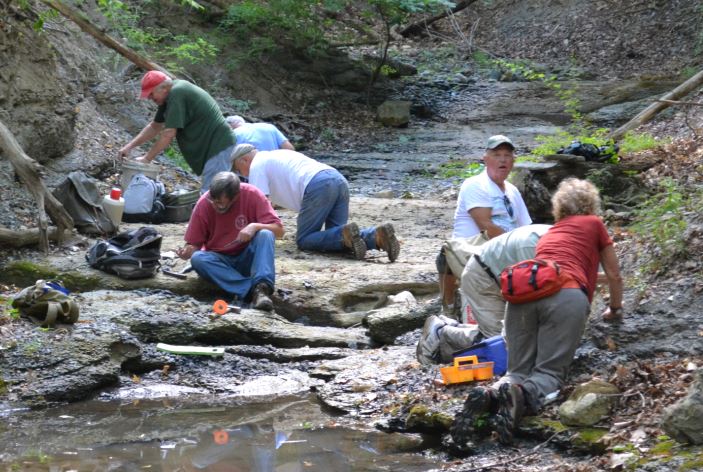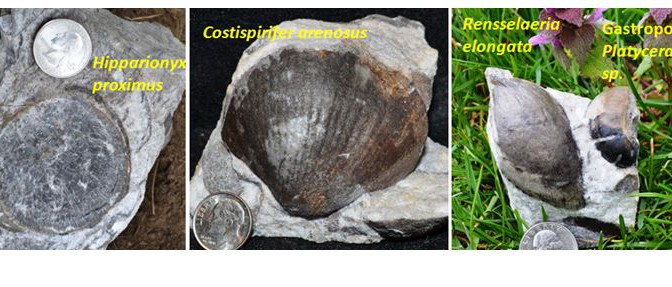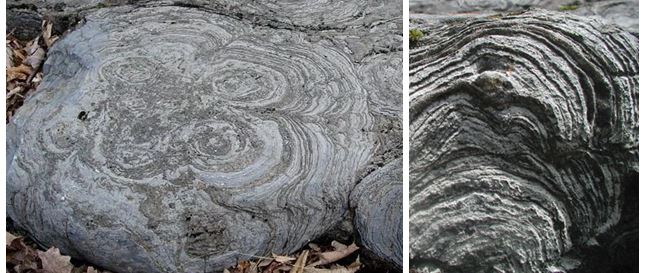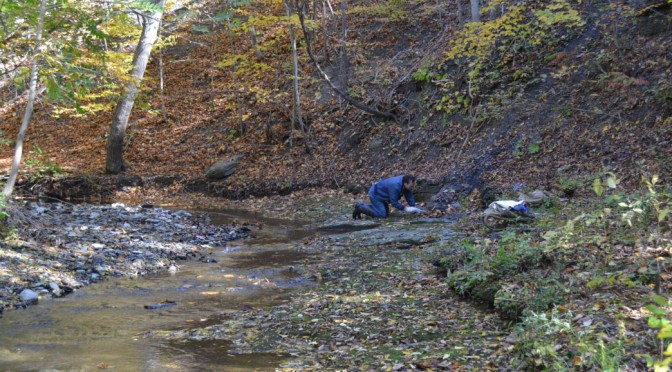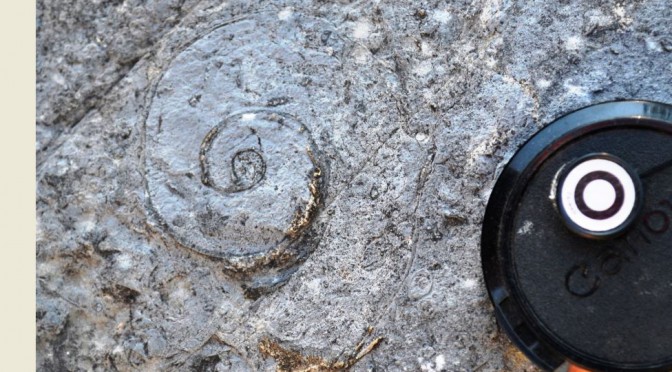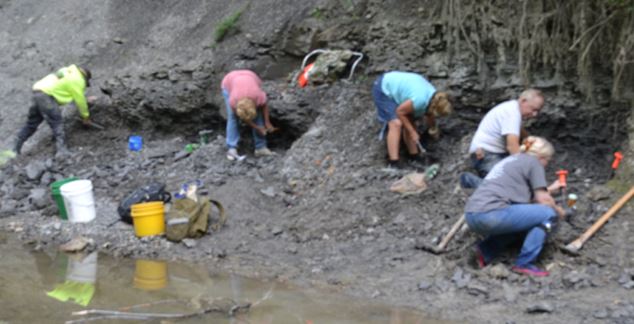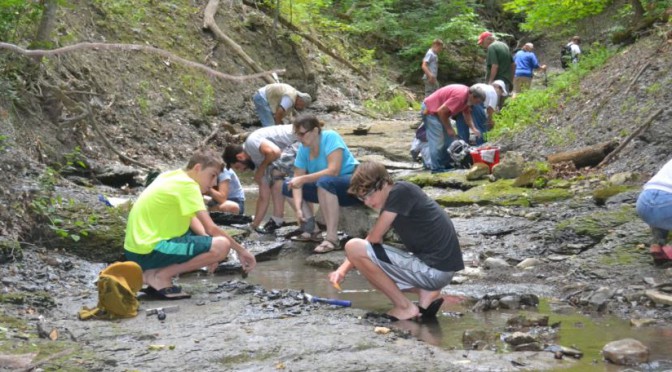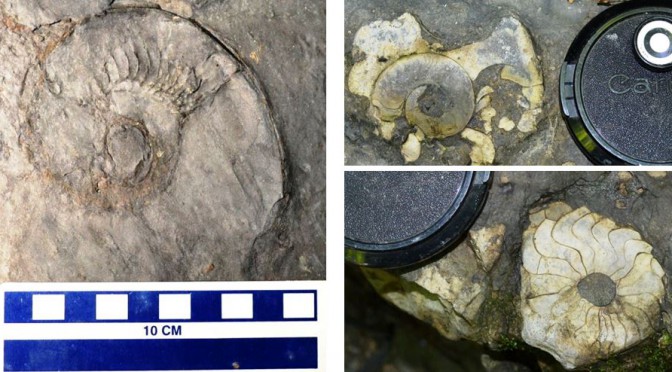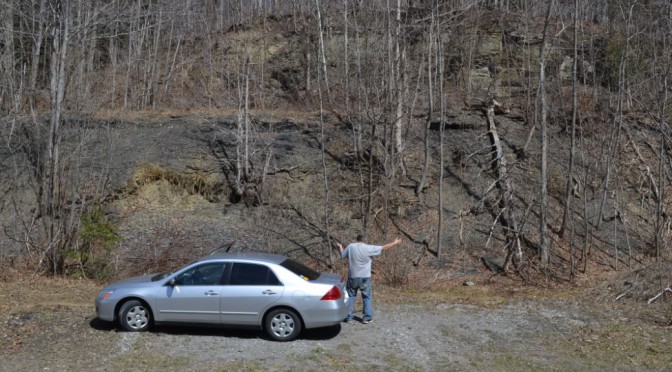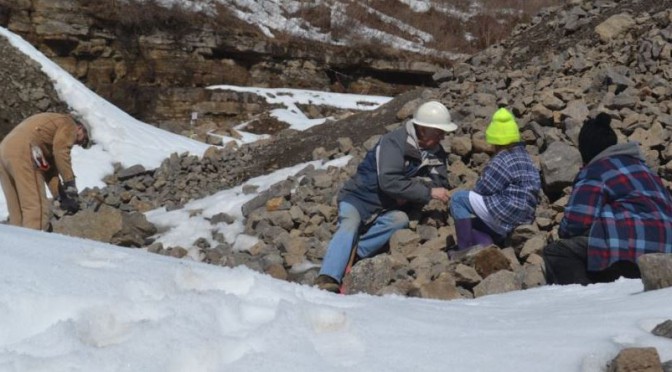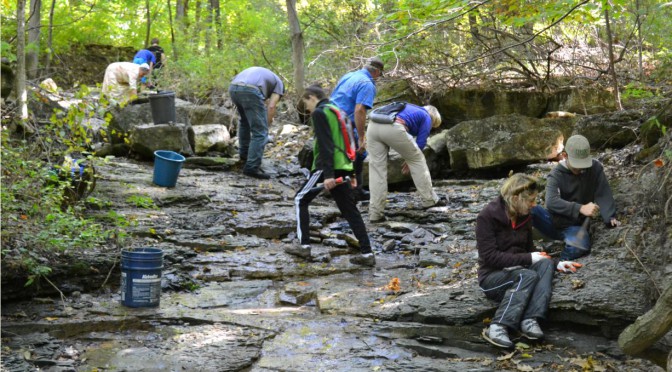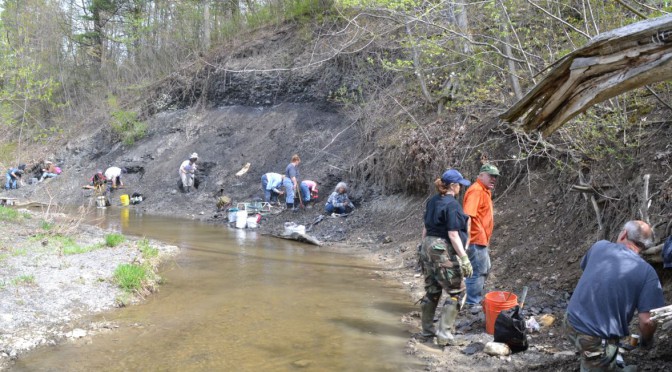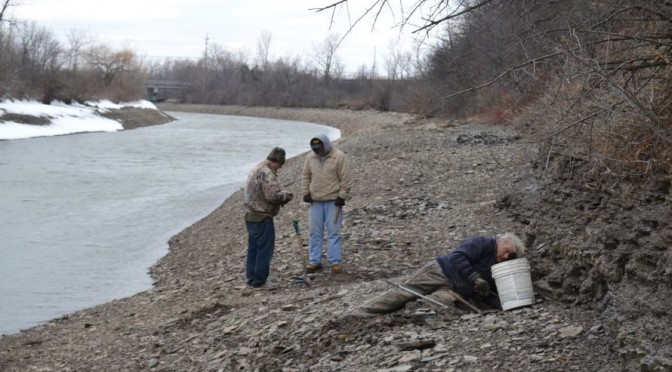NOTE ADDED OCTOBER 4, 2017: The property in Deep Run has changed ownership and the new owner is NOT allowing collecting or trespassing. The fossil-rich beds described in this note can no longer be visited. WCGMC will not schedule any more trips to Deep Run.
SECOND NOTE December 2019: The creek is still posted No Trespassing, however, the beach is public. In 2019, I started to collect sands and Deep Run Beach was one of my first to collect.
==============================================
Article I wrote for “Site of the Month”, WCGMC News, Sept. 2014
Devonian Fossils at Deep Run
Most residents of western New York carry on their daily business without any knowledge that they live in a region with some of the richest and most diverse fossil collecting in the United States. Those of us in the WCGMC are lucky to know how blessed with are with our collecting opportunities. But do we know the series of geologic events that led to this unique opportunity?
There are other fossil-bearing stratigraphic units in New York, but here we discuss the prolific Middle Devonian Ludlowville Formation within the Hamilton Group. About 385MY ago an inland shallow sea occupied much of western New York and both the sea and the benthic bottom literally teamed with marine life. Corals (both rugose and tabulate), brachiopods, gastropods, crinoids, and, of course, those highly sought after trilobites thrived communally in the shallow seas behind the continental mass to the west and inboard of the Catskill Delta and Acadian Mountains to the east.
Continue reading Deep Run, Lake Canandaigua →

